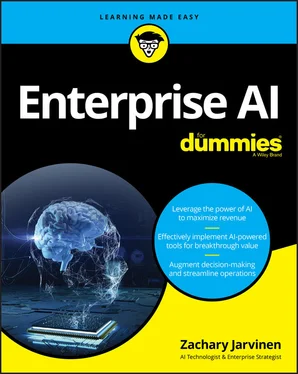Because AI systems are designed by humans, it is not a surprise that they would have bias in them. It can start at the very beginning when the problem is framed, in data collection, data preparation, or in all three.
As Microsoft’s experiment with Twitter revealed, an algorithm maximizes success as defined by the designers. Solon Barocas, an assistant professor at Cornell University who specializes in fairness in machine learning, pointed out that an issue arises while framing the problem when “those decisions are made for various business reasons other than fairness or discrimination. If the algorithm discovered that giving out subprime loans was an effective way to maximize profit, it would end up engaging in predatory behavior even if that wasn’t the company’s intention.”
Increasingly, social media has become a textbook case of algorithmically-enforced confirmation bias, or emergent bias. Emergent bias isn’t based on the source data, but rather on how the algorithm interacts with the user. For example, if a user likes, favorites, or subscribes to content with a certain viewpoint, such as articles about vaccinations, vegan diets, politics, or even exotic coffee, the algorithm feeds that user more content with the same viewpoint and excludes content from an opposing viewpoint. For example, coffee lovers get more content about the positive effects of coffee consumption and less content about the negative effects of excessive caffeine intake. Over time, the platform magnifies the echo-chamber effect of self-validation, amplifying the person’s inherent bias.
As of this writing, automated and human-in-the-loop tools to address bias, security, compliance, and transparency are appearing in the marketplace.
 When determining a specific use case for AI, consider these guidelines:
When determining a specific use case for AI, consider these guidelines:
1 Create a process that guides the development of trustworthy AI aligned with human values.
2 When framing the problem, seek a wide consensus of people to assure that the rewards are neutral and non-discriminatory.
3 Select people with a diverse set of perspectives to build the models.
4 Use diverse and high-quality relevant data.
5 Scrub your sources for bad data or hidden bias, such as race, gender, ideological differences, and the like. For example, a bank might remove gender and race from its loan-processing AI model, but U.S. ZIP codes can often serve as a proxy for race. Their inclusion could still lead to biased predictions that discriminate against historically underprivileged neighborhoods.
6 Rigorously examine the criteria for identifying selection variables.
7 Test machines for sources of bias and evidence of bias, and remedy any problems discovered.
Although you might hear the term “artificial intelligence” bandied about as if it were a single thing, the reality is that it is an umbrella term for a vast discipline covering countless models or algorithms of varying complexity and rigor. Even within machine learning, dozens of methods can help you accomplish your goal, each used for a specific type of problem.
This method of ML recognizes patterns in a dataset and infers the structure or identifies correlations between data elements. You use unsupervised learning when you want to discover relationships, such as between account activity and fraud or an attack on the system. Table 3-4lists AI project goals and the appropriate algorithms used for that task.
TABLE 3-4Unsupervised Learning Algorithms
| Goal |
Algorithm |
| Organize data in clusters or trees, such as evaluating investments according to volatility or return |
Hierarchical cluster analysis |
| Recommend a product or service based on the choices of similar customers |
Recommendation engine |
| Optimize delivery routes by identifying proximate destinations |
K-means clustering |
| Identify risk of heart disease based on heart sounds |
Gaussian mixture |
You use supervised learning when you want to classify new data based on known relationships in historical data, such as labeling incoming documents or screening job applications. Table 3-5lists AI project goals and the appropriate algorithms used for that task.
TABLE 3-5Supervised Learning Algorithms
| Goal |
Algorithm |
| Detect fraud in financial transactions |
Random forest |
| Forecast for supply chain management |
Regression |
| Forecast sales |
Neural network |
| Underwrite loans |
Decision tree |
This method of ML requires massive amounts of data, but typically with more accuracy and efficiency than other methods. You use deep learning when you want to solve complex problems such as image classification, natural-language processing, and speech recognition. Table 3-6lists AI project goals and the appropriate algorithms used for that task.
TABLE 3-6Deep Learning Algorithms
| Goal |
Algorithm |
| Train smarter chatbots, perform language translation |
Recurrent neural network |
| Make medical diagnoses using computer vision |
Convolutional neural network |
This method of ML learns a task through trial and error based on preferring actions that are rewarded and avoiding actions that are not. You use reinforcement learning when you need to find the optimum way of interacting with an environment, such as to automate stock trading or to teach a robot to perform a physical task.
Конец ознакомительного фрагмента.
Текст предоставлен ООО «ЛитРес».
Прочитайте эту книгу целиком, на ЛитРес.
Безопасно оплатить книгу можно банковской картой Visa, MasterCard, Maestro, со счета мобильного телефона, с платежного терминала, в салоне МТС или Связной, через PayPal, WebMoney, Яндекс.Деньги, QIWI Кошелек, бонусными картами или другим удобным Вам способом.

 When determining a specific use case for AI, consider these guidelines:
When determining a specific use case for AI, consider these guidelines:










